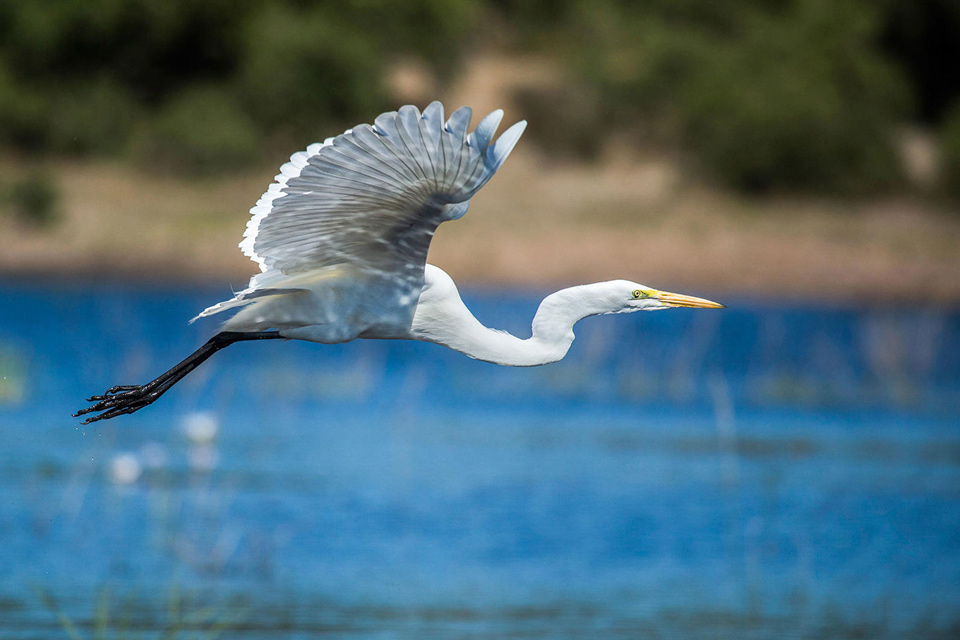
Great Egret. Photo: Beverly Houwing/Audubon Photography Awards
H.R. 8 - Passed the House by a recorded vote of 408 - 2
Click here for the roll call vote
Progress on water legislation is important for birds and people.
June 10, 2018 - WASHINGTON — The National Audubon Society praised passage of the Water Resources Development Act (HR 8), or WRDA, in the U.S. House of Representatives last Wednesday. The bill enjoyed broad and bipartisan support and was passed 408-2.“Today’s vote represents a promising, bipartisan effort and shows that Congress recognizes the need to protect and improve water resources that are critical for birds and the places they need,” said Julie Hill-Gabriel, vice president for water conservation at National Audubon Society. “Water is a unifying force, and we’d like to thank Representatives Bill Shuster (R-PA), Peter DeFazio (D-OR), Garret Graves (R-LA) and Grace Napolitano (D-CA) for their leadership on this bill.”
As the legislation proceeds to the U.S. Senate, Audubon will continue working to advance restoration efforts in special places like the Everglades and the Great Lakes. It is also a priority for Audubon to ensure that the final WRDA requires the Army Corps of Engineers to consider “natural infrastructure” as an option to help communities prepare and recover from extreme coastal events; natural infrastructure helps by buffering storm damage, absorbing flood waters, and providing a front line of defense from storms. It also provides critical habitat for shore birds like the Great Egret.
Additionally, natural infrastructure helps decrease the costs of natural disaster damage. For example, New Jersey’s freshwater wetlands on average save $3 billion per year in avoided losses from floods, storm surges, and other disturbances.
Audubon’s 2018 report on natural infrastructure projects is available at: https://www.audubon.org/sites/default/files/audubon_infrastructure_jan192018.pdf.
To read more about Audubon’s work on coastal resilience, please visit: http://www.audubon.org/conservation/coastal-resilience.
The National Audubon Society protects birds and the places they need, today and tomorrow, throughout the Americas using science, advocacy, education and on-the-ground conservation. Audubon's state programs, nature centers, chapters and partners have an unparalleled wingspan that reaches millions of people each year to inform, inspire and unite diverse communities in conservation action. Since 1905, Audubon's vision has been a world in which people and wildlife thrive. Audubon is a nonprofit conservation organization. Learn more how to help at www.audubon.org and follow us on Twitter and Instagram at @audubonsociety.
Source: National Audubon Society
